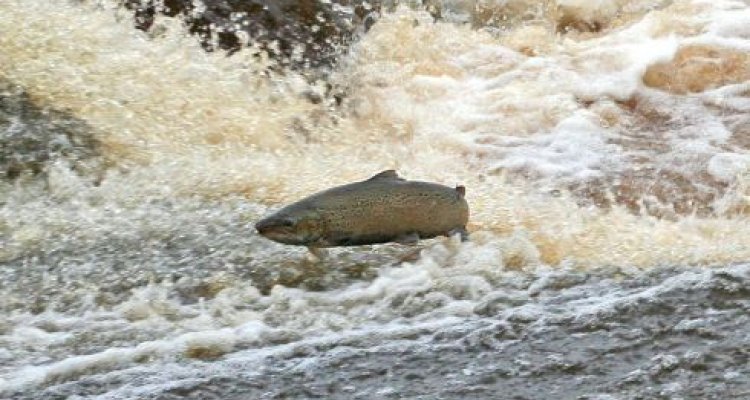
Student information
Amit did his thesis on resistance biomarkers in salmon
Amit Das from India finished his EMABG thesis in summer 2011 at the Norwegian University of Life Sciences (UMB) in Aas, Norway.
Summary
Indications of additive genetic difference in lice resistance in Atlantic salmon (Salmo salar) have led us to hypothesize that biomarkers of resistance are present in the plasma and/or mucus of fish. High throughput Fourier Transform Infrared (FT-IR) profiling of plasma and mucus together with screening of the selected blood parameters (with the help of i-STAT blood gas analyzer) were coupled with multivariate statistical analysis to investigate the differences between two groups (susceptible (S) and Resistant (R)) of Atlantic salmon that shown different in their susceptibility to sea lice. The assignment was based on the sea lice challenge test results of their full-sibs. 65 rainbow trout (Oncorhychus mykiss) were also included in this trial in order to study the species-specific differences for this trait. Fish was challenged twice between late November and early December 2008 and lice were counted for the first time in December 2008 (chalimus sessile stage), followed by second count in January 2009 (pre-adult motile stage) and finally in February 2009 (adult motile stage). A large variation in lice counts both between individual Atlantic salmon and individual rainbow trout was observed. With respect to lice count, S and R groups of Atlantic salmon were different in both sessile and motile stages of lice, indicating genetic background for this trait. Rainbow trout was found to be a more susceptible species than Atlantic salmon in this study, which contradicts most previous studies that suggested Atlantic salmon as slightly more susceptible.
Blood parameters are useful measures of physiological disturbance. Most of the measured blood parameters by i-STAT did not show significant differences between the S and R groups of Atlantic salmon, indicating that they were expressed at constitutive levels and not variable due to the low levels of sea lice infection at the time the sample were recorded. Hematocrit and haemoglobin were found to be very responsive parameters, however, not very specific to the individual lice count. However, the R group of salmon had significantly (P <0.05) higher hematocrit and haemoglobin values than the S group, indicating a genetic background for these parameters. They need to be further examined as the potential inclusion criteria for indirect selection towards increased resistance to sea lice. However, no clustering of S and R groups of Atlantic salmon or Atlantic salmon and rainbow trout with respect to lice count was obtained upon FT-IR spectral analysis of plasma and mucus by Principal Component Analysis (PCA) and Partial Least Squares Regression (PLSR) techniques to differentiate S and R groups of Atlantic salmon or Atlantic salmon and rainbow trout based on number of lice per fish. Moreover, High-throughput FT-IR approach on mucus and blood plasma complemented with classical blood markers at low levels of adult lice present on fish in the final last count did not explain the differences in the number of lice at previous counts.
It could be suspected that the variation in FT-IR and i-STAT parameters observed during the last lice count fell within the constitutive (innate) levels of fish. Further studies are still required and metabolomics approach may be more useful at higher level of lice infection to detect the variation in metabolites. However, as the number of lice per grow-out salmon, and thus also breeding candidate, must be kept at very low levels, the metabolomics methods used in this study are not likely to be useful to obtain indirect measures of lice resistance in salmon selective breeding programs.